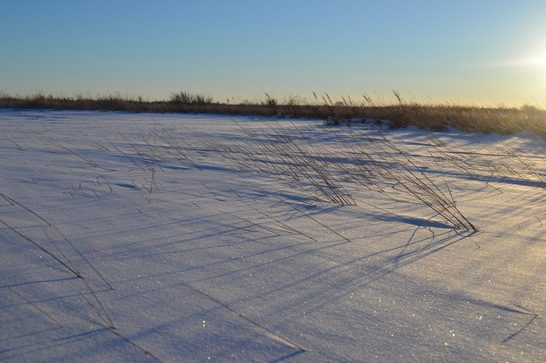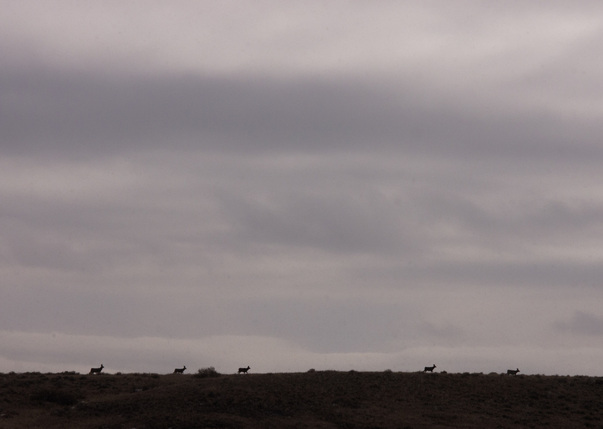First impressions of a barren land space can distract one from the reality of the plains.
While the open landscape can feel quite transparent, much is hidden away in coulees and stream banks, or just out of sight over the nearest hill. This subtle opacity keeps us forever conscious of our surroundings: Reaching the top of a ridge not only affords one a new vista, but can also result in close encounters with wandering ungulates.
This duality runs deep. The openness leads us to haphazardly estimate distances, and hills that loom like mountains on the horizon become mere molehills when ascended. While all the species in this ecosystem are inherently connected, the ways in which they occupy and utilize space are on entirely different scales.
With each snowfall, calmness settles over the land. Tufts of grass poke up above the white blanket and our boots crunch across firmly frozen ground. The silence runs deep, broken by the swish of nylon and heavy breathing as we walk.
Such an absence of sound is hard to find in this world, and it is abundant here in the winter months. This quiet makes the bounding of a snowshoe hare, or the yips of a coyote pack seem all the more piercing and abrupt. We savor these moments and greet them with great reverence.
Winter tends to stretch on forever here—a feeling mirrored in the landscape. The undulating hills, and vast expanses of open space stretch far beyond the limits of our vision. If our maps didn’t impose boundaries on this space, there would be no reason to suppose the prairie is finite.
Days and nights blur into one another. Clouds shift quickly across the open sky. Temperatures drop and surge hourly. Snow melts and falls. Herds migrate daily from one corner to another.
The prairie is a land of extremes, but it has been here for millennia, and in that we find consistency. In order to thrive here, one must surrender.


